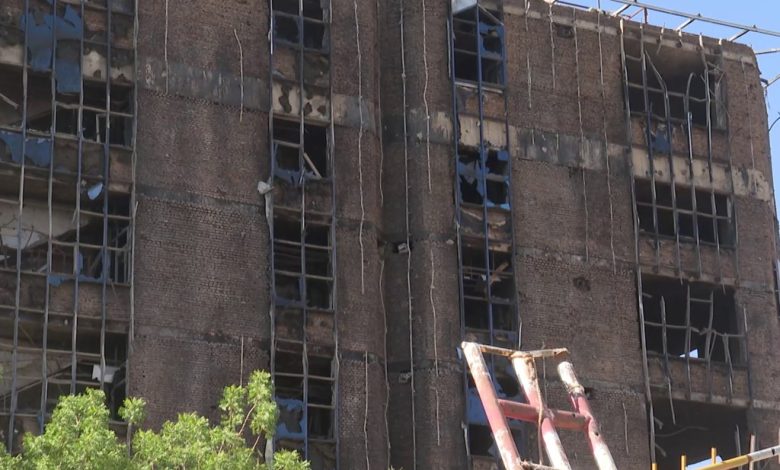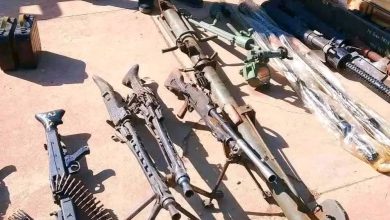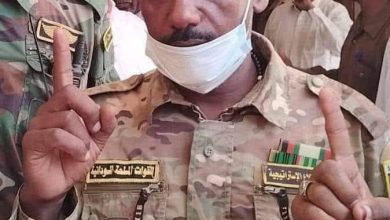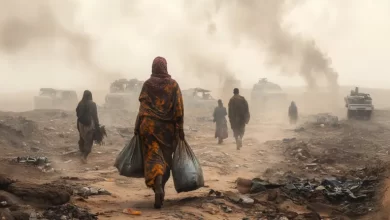Khartoum… Seeing is Not Like Hearing

Sudan Events – Agencies
With heavy steps, Sudan’s capital Khartoum tries to rise from beneath the rubble. The city that once bustled with life has seen most of its neighborhoods reduced to ruins after two years of war.
From the first moment of entering Khartoum, the signs of war are evident. Bullets have painted bloody murals on the walls of homes and tall buildings. Empty shells litter the roads, especially near military zones at the city’s entrances, such as Al-Jili in the north, where a fierce battle left clear marks from intense aerial and ground warfare, and where blood soaked both soil and asphalt.
The Sudanese army managed to fully reclaim the city of Bahri, north of Khartoum, from the Rapid Support Forces (RSF), who had fortified themselves around the Al-Jili oil refinery — their first line of defense.
The Wounded City
Bahri, one of the three cities forming the state of Khartoum (Khartoum, Bahri, and Omdurman), is home to some of the oldest markets, schools, universities, and public squares. It was under RSF control for more than a year and a half until the army recently retook it. Yet, it appears wounded and lost.
In the outskirts of Bahri, like Al-Droshab, Al-Samarab, and Al-Kadro, life has partially returned with the comeback of some families and the reopening of a few shops and local transportation services. However, these areas have been suffering from a power outage for over ten days, coupled with a lack of access to water.
A deeper look into central Bahri — neighborhoods like Al-Hilfiya, Shambat, Al-Mazad, and Al-Amlak — reveals the true face of the war and suffering. These areas were under full RSF control from the start of the war, and most of the residents had fled, with only a few remaining under RSF command, according to residents’ testimonies.
The war’s toll is stark: markets shut down entirely, water and electricity stations are completely destroyed, and prominent flour factories have been looted and stopped functioning, according to Al Jazeera Net. Public transport has halted entirely.
A small number of young people have returned since the army reclaimed the city in February, hoping to protect their homes in anticipation of their families’ return once basic services are restored.
Movement and Life
Only one bridge remains operational between Bahri and Omdurman: the Al-Hilfiya Bridge, despite being scarred from battles. The Shambat Bridge is no longer functioning. The Al-Hilfiya Bridge still sees vehicle traffic between Bahri, East Nile to the east, and Omdurman to the west.
In Omdurman, especially the southern part, Al Jazeera’s correspondent observed signs of normal life — particularly from the bridge’s entrance heading south to Gezira Islang and north to old Omdurman.
Neighborhoods like Al-Hattana, Al-Shati, and Karari were not heavily affected and saw brief 48-hour clashes before the army established control, according to local residents.
On Al-Wadi Street, Omdurman’s most famous road, life seems unaffected by war: traffic jams, open shops, street vendors, traffic police, and busy cafes and restaurants.
In the older riverside neighborhoods like Abu Rouf, Wad Al-Bana, Al-Abbassiya, and Wad Nubawi, life appears to have bounced back. These areas saw some of the fiercest battles in March 2024, but the army eventually regained control. Now, according to Al Jazeera Net, families have returned, markets are open, and electricity, water, and telecom services have been restored.
In contrast, some northern and western neighborhoods of Omdurman — such as Al-Muhandisin, Al-Nakheel, Umbadda, and Al-Salha — are still under fire. Basic services are non-existent, gunfire is regularly heard, and few families have returned despite the army reclaiming large parts.
A City Without a Face
Khartoum remains the most affected by the war. Once the political heart of the country, full of bustling markets, universities, and hospitals, life there has come to a near-complete standstill.
The war destroyed all its iconic commercial and government towers, like the Nile Petroleum Tower, Al-Fateh Tower, the Telecommunications Tower, and the Sahel and Sahara Tower. Universities have closed and moved operations elsewhere. Markets were looted, banks were burned, newspapers ceased printing, political forums shut down, and mosques were abandoned. The city’s bridges, once symbols of its vibrant life, are now silent.
In central Khartoum, the devastation is overwhelming: disabled tanks, burnt combat vehicles, sand barriers in the streets, and bullet scars on everything — including mosques and churches. Skeletal remains of bodies still lie in the streets, as the local government struggles to bury them. Bullet holes mark nearly every wall.
Life in central Khartoum has completely stopped, even though it was retaken by the army. The only movement comes from the armed forces’ four-wheel-drive vehicles.
The Republican Palace, once a symbol of governance and sovereignty, now stands in mourning, soaked with blood from both sides of the conflict. The Army General Command has become the frontline of the war, a grim monument to Sudan’s wartime era.
In southern Khartoum, life is gradually returning to areas like Kalakla and Tayba, where Kalakla’s markets have partially reopened under the army’s protection, signaling a slow revival of daily life.
Source: Al Jazeera Net



